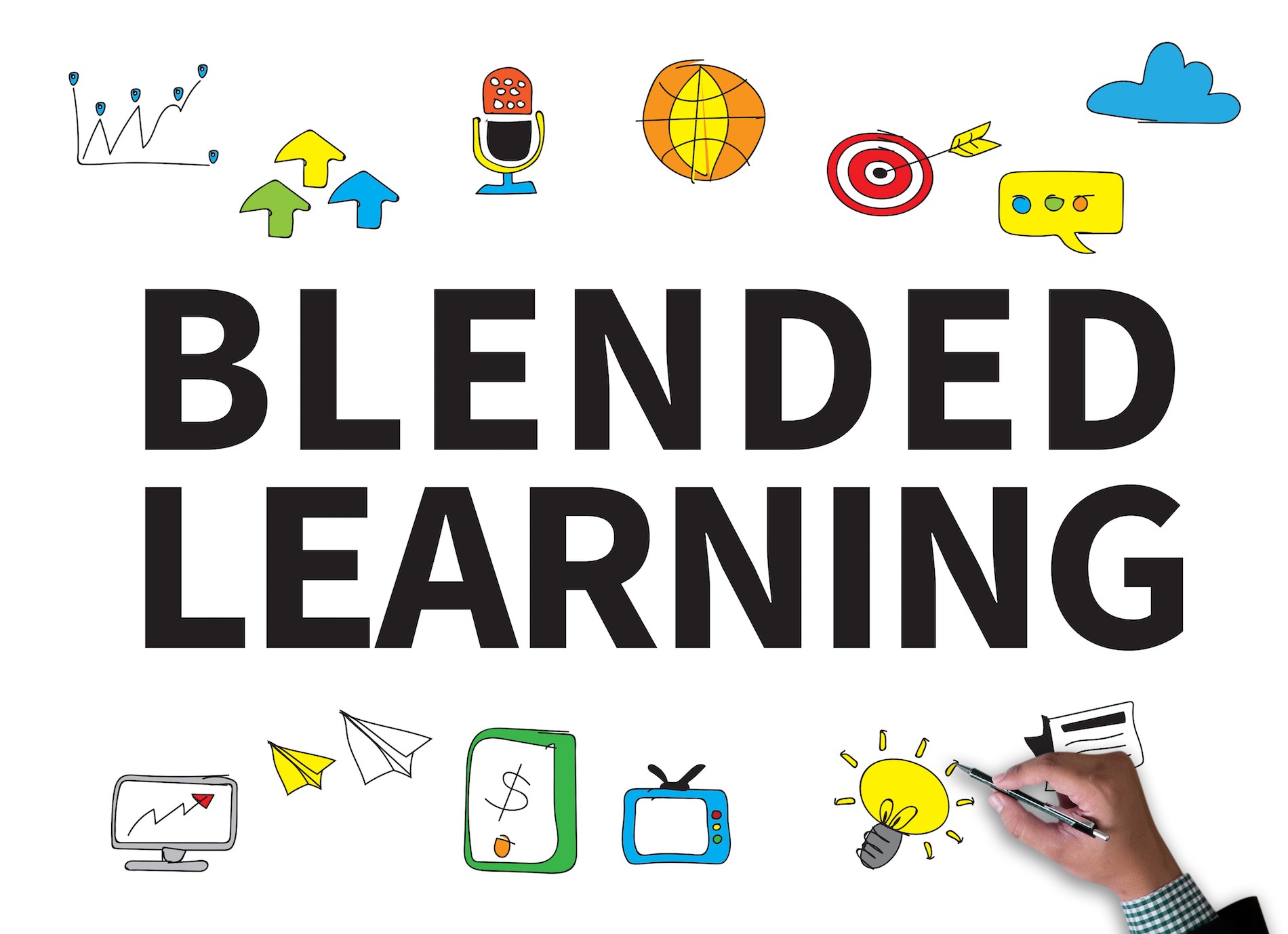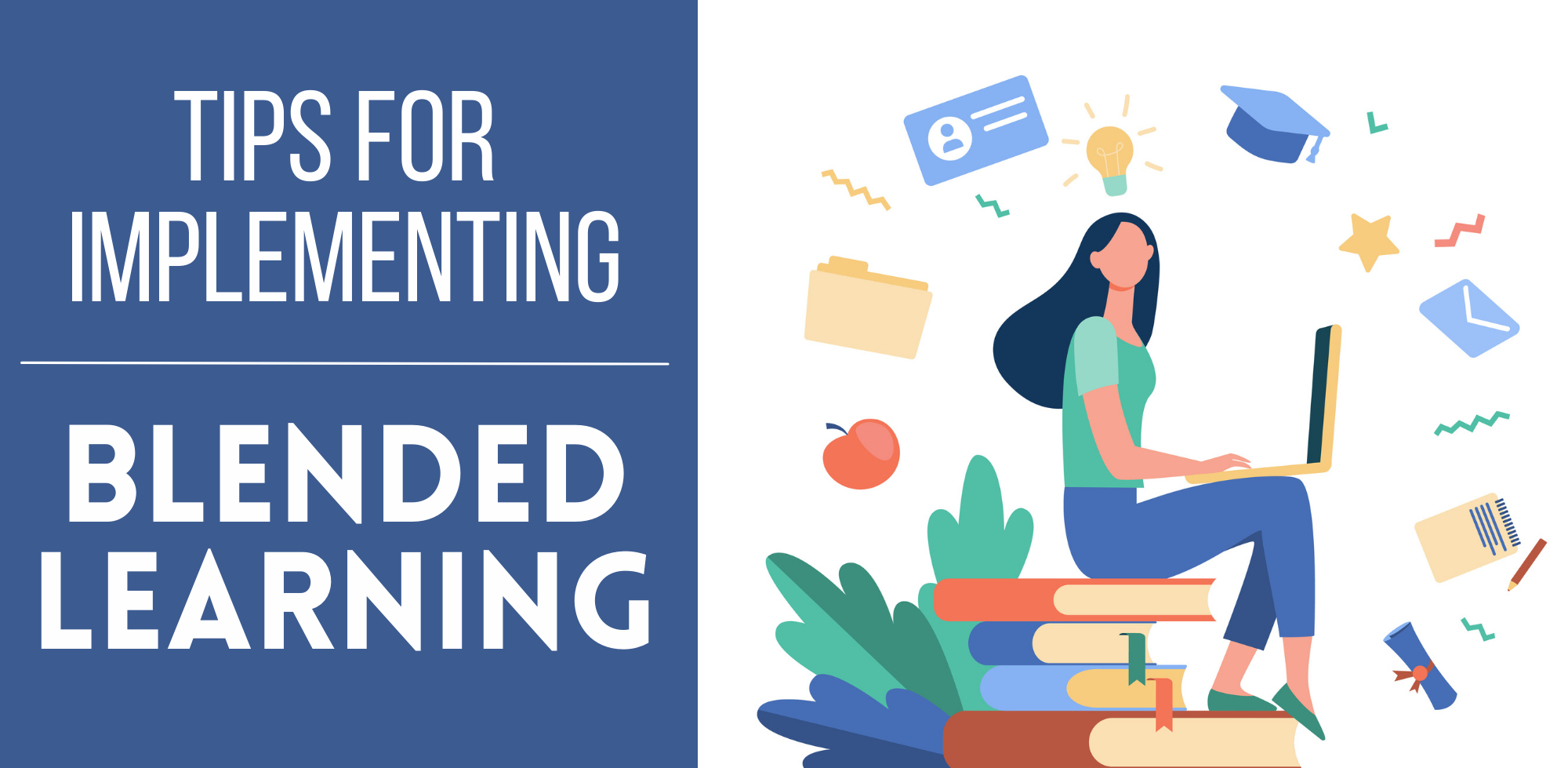
Blended Learning is a new-age educational approach combining traditional face-to-face and online learning. Students can now avail themselves of the benefits of one-to-one learning and the convenience of studying from home. This type of learning can help bring out the best elements of both modes. The resources will be unlimited; understanding can be thorough when these blend. As we venture into the 21st century, the demand for such types of learning has become increasingly popular. However, its implementation can be quite tricky. So, educational institutions must set up strategies and approaches to get the best outcome.
So, before delving into the strategies for the success of Blended Learning, we must understand what it is exactly and why it is beneficial for new-age learners.
What Is Blended Learning?
Blended learning helps integrate traditional classroom environments with online educational resources. It is the perfect middle ground for in-person instruction and digital learning. Due to time limits and class size, teachers in traditional classrooms often find it difficult to provide each student with personalised attention. However, more individualised interactions are made possible in blended learning environments. Online tools allow teachers to monitor students' progress, spot problem areas, and provide individualised help. Now, students can communicate with the subject experts face-to-face and through emails, video calls, or online forums, ensuring a smooth learning process. The workings of blended learning go beyond the classroom scenario, and learning is becoming more efficient. The capacity to move between the digital and real worlds is becoming increasingly important as they blend and merge. Moreover, blended learning can help build flexibility, which caters to better digital literacy and the future workforce environment.
Some of the benefits of blended learning can be seen as the following:
Unique and personalised learning experiences: Blended learning experiences are quite unique and, more importantly, personalised. This is because students can get hands-on training from professionals and online mode can help students to get on track and continue at their own pace. Moreover, online learning content can be customised according to the student’s needs and identify areas where students need extra help.
Unifying the gap between traditional and online learning: This type of learning provides the best of both modes. The fusion of the two can help bring out learning that is relevant and comprehensive and that aligns with the needs of the student. It allows students take a step towards literacy, which fosters traditional learning and a futuristic digital world scenario.
Cost-Effective: This type, of course, can be cost-effective as institutions implementing a blended mode spend less money on physical infrastructure and materials. This, in turn, results in a reduction of money for the students as well.
Futuristic Learning: Learning through blended mode can result in a more futuristic kind of learning as it prepares the students for digital literacy. In this fast-paced world, it is very important for individuals to be proficient in technology, and thus, students can experience it.
Performance and Outcome Enhancement: It has been quite prominent that blended learning can enable and enhance students' performance and understanding outcomes. The personalized approach to learning allows students to engage actively and understand effectively, fostering a sense of autonomy in the knowledge-gaining process.
Implementing Blended Learning- A Strategic Approach

Blended Learning surely benefits students of the new age world but implementing it in institutions can be a task. Institutions need to understand the wants and needs of the students, carefully and only through strategic planning, can they implement this kind of learning. Some of the strategies may include the following:
Develop a comprehensive plan: Planning is the core requirement for any work to be achievable. By developing a comprehensive plan, institutions can foresee what is important and what is not. Institutions need to outline clear objectives and set goals to achieve the required outcome effectively. The integration of the same can only be smooth when teacher, students, staff, etc. quite effectively understand their roles and responsibilities.
Invest in Technological Infrastructure: Investing in technology can help bring out the best outcomes in this type of learning. Certain Learning Management Systems if installed can help in supporting various educational tools and thus will integrate seamlessly with other platforms and be compatible.
Implementation of varied types of learning materials: It is important for institutions to implement various learning tools, including discussions, hands-on activities, group work, and online resources, which will cater to a better learning experience. The content will be more engaging with a number of tools in place. This will not only enhance the learning experience but also help students remember what they learn.
Autonomous learning: Blended learning quite effectively boosts autonomous learning in a student, so by encouraging them to take ownership of their education by setting goals and managing their time, learning can be effective. The future is all about self-help and thus by ensuring autonomy in learning, knowledge sharing and gaining can be quite effective.
Balance between online and offline: One of the most important strategies for this type of learning to work is ensuring a good balance between the online and offline modes. Live sessions can be scheduled for direct interaction and continuous feedback, alongside promoting recorded lectures, readings, and discussion forums to allow self-paced learning.
Promote Digital Literacy: In a country like India, where half the population is deprived of internet connectivity, promoting digital literacy for this type of learning is quite essential. Only when students learn about the pros and cons of technology will they access it accordingly. Teaching the students certain essential skills including, navigating through online platforms and practising digital safety can be a strategic step towards blended learning.
Conclusion
Blended Learning has many perks, but it depends on the institutions' ability to implement it effectively. The shift from any technology takes time, and thus, so will this. As the educational sector continues to evolve, it should help students cope with new trends and scenarios. Thus, only by adapting to the ever-changing world can any sector remain relevant and thrive.




Comments